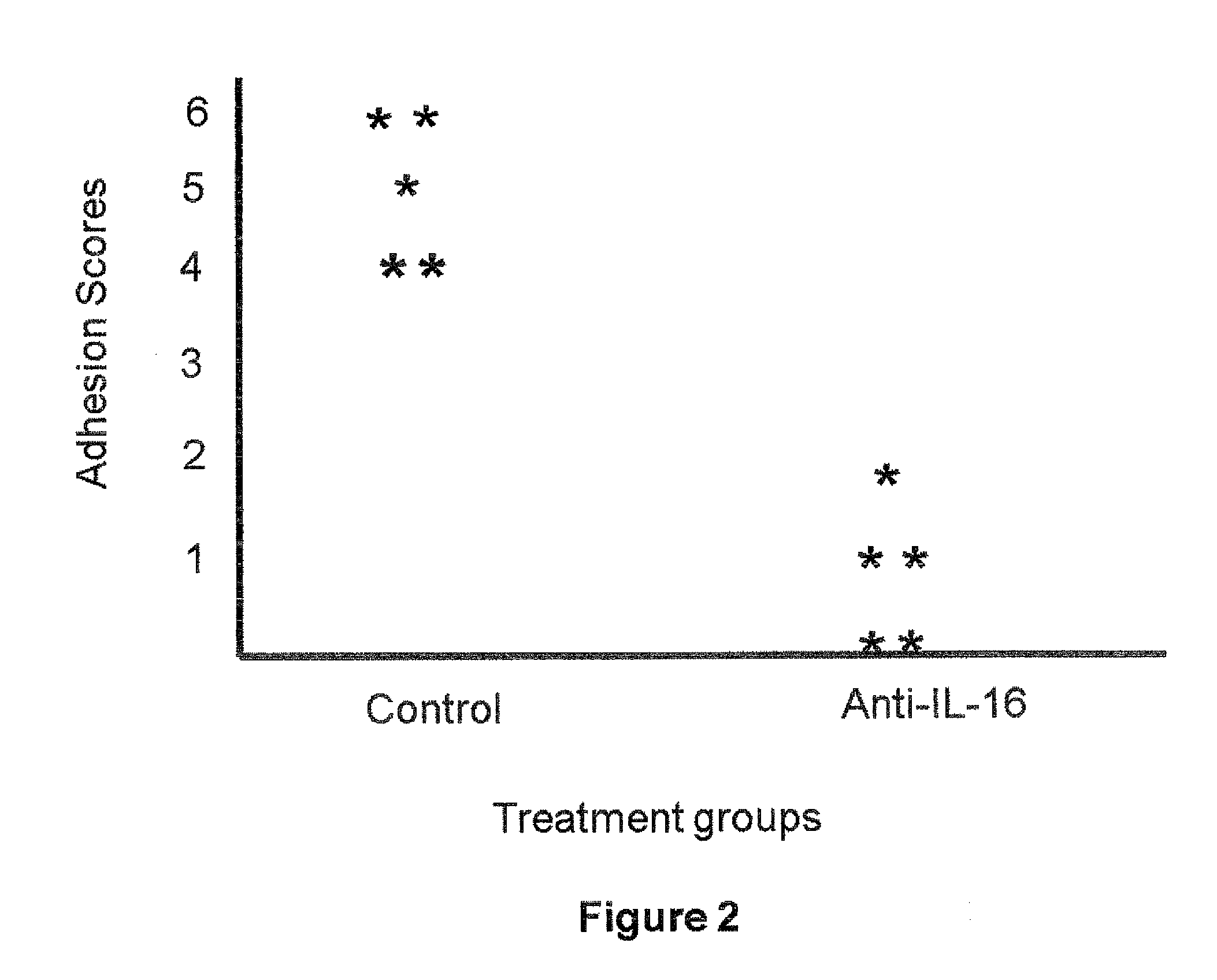Methods and compositions for preventing adhesion
- Summary
- Abstract
- Description
- Claims
- Application Information
AI Technical Summary
Benefits of technology
Problems solved by technology
Method used
Image
Examples
example-1
Mouse Model of Surgical Adhesion Formation
[0059]C57BL / 6J mice were purchased from The Jackson Laboratory (Bar Harbor, Me.). All animals were provided with food and water ad libitum and housed under specific pathogen-free conditions. The mice were maintained according to the Harvard Medical School animal management program, which is accredited by the American Association for the Accreditation of Laboratory Animal Care.
[0060]Abdominal surgery was performed following guidelines approved by the Harvard Medical School animal management program. Mice were anesthetized with a single injection i.p. of 0.2 ml of pentobarbital sodium (50 mg / ml; Abbott Laboratories, North Chicago, Ill.) diluted 1 / 5 v / v in PBS (10 mg / ml). Abdominal adhesions were induced by abrasion of the cecum and the abdominal wall as described previously (Chung et al., J. Exp. Med. 195:1471-1478 (2002). Briefly, sterile surgical gauze was used to abrade the cecum with 7 to 8 strokes of a consistent medium pressure. This res...
example-2
Rat Model of Surgical Adhesion Formation
[0062]Male Wistar rats (200-225 g; Charles River Labs, Wilmington, Mass.) housed at constant room temperature and under 12 hr light / dark cycles, were allowed access to food and water ad libitum. The protocol for animal care and operative procedures was approved by the Institutional Animal Care and Use Committee at the Boston University School of Medicine. Ischemic intraperitoneal buttons were created as follows: After induction of anesthesia, a midline incision was made and six buttons were created by grasping approximately 5 mm of peritoneal tissue with forceps and ligating the base of the tissue with 4-0 silk ligature. 1 cc normal saline (vehicle control) or the test substance (anti-IL-16, 1 ug) was injected into the peritoneal cavity just prior to incision closure. Animals were sacrificed at 7 days following surgery. Adhesion formation was quantified in a blinded fashion with each animal receiving a score based on the percentage of ischemic...
PUM
| Property | Measurement | Unit |
|---|---|---|
| Length | aaaaa | aaaaa |
| Adhesion strength | aaaaa | aaaaa |
Abstract
Description
Claims
Application Information
 Login to View More
Login to View More - R&D
- Intellectual Property
- Life Sciences
- Materials
- Tech Scout
- Unparalleled Data Quality
- Higher Quality Content
- 60% Fewer Hallucinations
Browse by: Latest US Patents, China's latest patents, Technical Efficacy Thesaurus, Application Domain, Technology Topic, Popular Technical Reports.
© 2025 PatSnap. All rights reserved.Legal|Privacy policy|Modern Slavery Act Transparency Statement|Sitemap|About US| Contact US: help@patsnap.com


